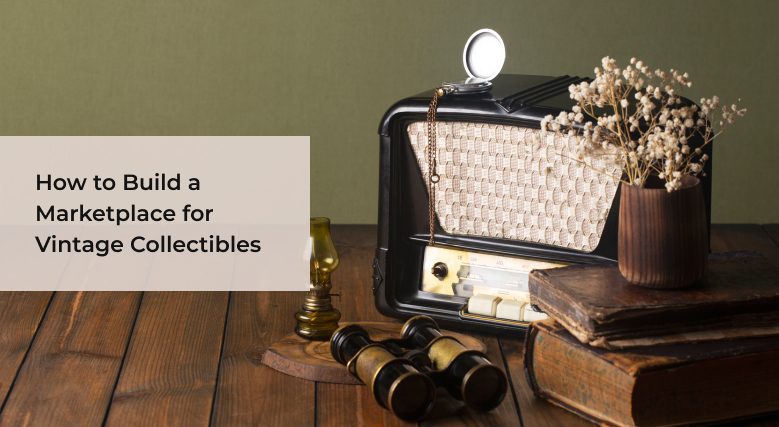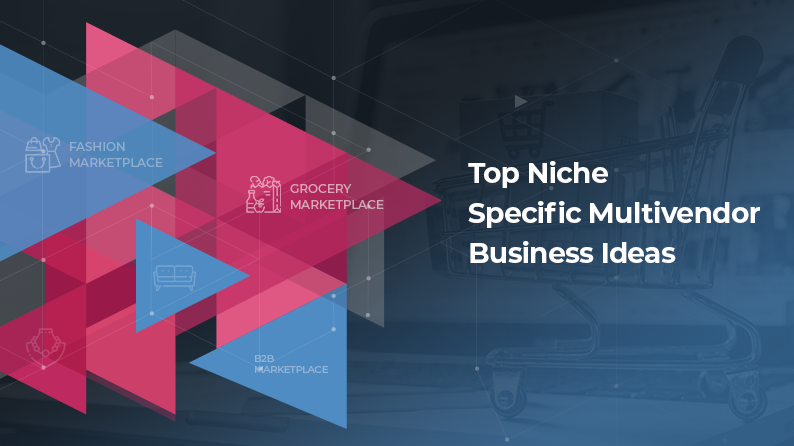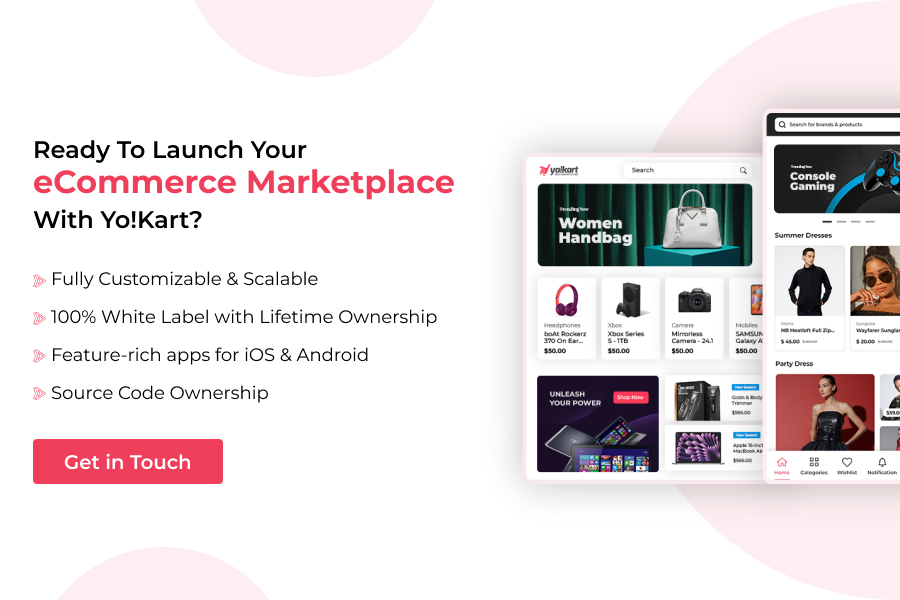The world of vintage collectibles holds a unique charm. From rare vinyl records and antique furniture to retro toys and timeless fashion, collectors are always on the hunt for that next prized piece. Traditionally, buyers and sellers relied on physical auctions or general platforms like eBay. However, the rise of niche online marketplaces is revolutionizing how vintage collectibles are traded.
If you’re considering tapping into this passionate and profitable market, now is the perfect time. This guide will walk you through everything you need to build a vintage collectibles marketplace, from market research and business models to platform features and monetization.
Table of Contents
What Are Vintage Collectibles?
Before diving into the process of building a marketplace for vintage collectibles, it’s important to understand what vintage collectibles actually are.
Vintage collectibles are products that originate from a previous era and are valued for their age, rarity, condition, and cultural significance. Typically, a product is considered “vintage” if it is at least 20 to 30 years old, though not old enough to be classified as antique (which usually means 100+ years). These products often evoke nostalgia, carry historical value, or represent a specific style or trend from the past.
Collectors seek vintage items not just for their aesthetics, but also for the stories and memories they hold. Whether it’s a vinyl record from the ’70s, a designer handbag from the ’90s, or a limited-edition action figure from the ’80s, these collectibles often reflect the design, technology, and cultural movements of their time.
Why Launch a Vintage Collectibles Marketplace?
- Booming Demand for Collectibles
The vintage collectibles market is no longer a small niche; it’s a global phenomenon. Reports show that the global collectibles market is expected to surpass $422.56 billion by 2030, driven by millennials and Gen Z, who are rediscovering and investing in nostalgic items. Whether it’s retro gaming consoles or vintage jewelry, the demand continues to rise.
- Tightly-Knit Communities
Collectors aren’t just buyers; they’re enthusiasts who form strong online communities. These users are loyal, knowledgeable, and often prefer platforms that cater specifically to their interests. Hence, a dedicated marketplace for vintage collectibles helps build trust and provides features that general eCommerce sites lack.
- High-Value Transactions
Vintage items, especially rare or well-preserved ones, often carry a premium price tag. This means higher commission potential for marketplace owners and more value-driven engagement for sellers.
Types of Vintage Collectibles You Can Focus On
Before building a marketplace for vintage collectibles, it’s important to define your niche. You can either go broad with multiple categories or focus on a specific collectible type. Here are some popular types of vintage collectibles you can focus on:
- Vintage Fashion – Designer apparel, bags, and accessories from previous decades.
- Vinyl Records & Music Memorabilia – LPs, cassettes, posters, autographs.
- Antique Furniture – Classic furniture with historic or aesthetic value.
- Old Toys & Action Figures – Limited edition toys, Barbie dolls, GI Joe figures.
- Comic Books & Magazines – First editions, signed copies, rare prints.
- Rare Coins & Stamps – Highly collectible and often valuable.
- Vintage Electronics – Old cameras, radios, and early computers.
- Movie Props & Memorabilia – Items from classic films or shows.
Understanding what your audience is looking for helps you shape your brand identity and site features accordingly, helping you build a marketplace for vintage collectibles that stands out in the market.
Want to launch a Powerful Niche Marketplace for Vintage Collectibles?
Steps to Build a Vintage Collectibles Marketplace
Step 1: Conduct Market Research and Validate Your Idea
Start by identifying whether there’s a real demand for your business idea. Ask questions like:
- Who is your target audience—hobbyists, serious collectors, or dealers?
- What platforms are they currently using? What’s lacking there?
- Are there active communities or forums around your niche?
Use Reddit, Facebook groups, eBay categories, and Etsy search trends to see what’s popular and where gaps exist.
You can also create surveys or conduct interviews to gather first-hand insights from buyers and sellers in the collectibles space.
Step 2: Decide on the Marketplace Model
There are a few operational models you can consider:
- C2C (Consumer to Consumer): Individuals sell directly to other individuals. Think eBay-style, but niche-specific.
- B2C (Business to Consumer): Professional sellers or vintage stores list their products for sale to consumers.
- P2P with Authentication: A peer-to-peer model where products are verified for authenticity before being listed or delivered, ideal for high-value items like rare coins or vintage designer fashion.
Choose the model based on the products you plan to support and the level of trust you need to build in the platform.
Step 3: Plan Monetization Strategies
To generate revenue, consider these monetization models:
- Commission per Sale: Earn a percentage every time a transaction happens.
- Listing Fees: Charge sellers to list items, especially premium or featured listings.
- Subscription Plans: Offer tiered memberships with access to premium tools or higher visibility.
- Promoted Listings: Let sellers pay to highlight their products.
- Third-Party Services: Charge for additional services like authentication or insurance.
Having multiple revenue streams ensures sustainability while also catering to both casual sellers and professional vendors.
Step 4: Define Core Features and Functionalities
Your marketplace should address the specific needs of collectors, including detailed product information, secure payments, and trust-building tools like ratings and verification.
For Buyers:
- Advanced Search Filters: Allow users to filter collectibles by era, condition, price range, category, or rarity for a more personalized and efficient shopping experience.
- Wishlist & Alerts: Allow buyers to save favorite items and receive real-time notifications when desired collectibles are listed or prices drop.
- Messaging System: Facilitate direct, secure communication between buyers and sellers to ask questions, negotiate, or request additional product details.
- Secure Checkout: Integrate trusted payment gateways (PayPal, Stripe, etc.) with encryption to protect buyer data and ensure a safe transaction process.
- Product Reviews: Buyers can read and leave detailed reviews on products and sellers, helping to build trust and guide purchasing decisions.
For Sellers:
- Easy Listing Process: Allow sellers to upload items quickly with intuitive forms, bulk listing options, and the ability to easily edit or duplicate previous listings.
- Inventory Management: Track inventory in real-time, including sold, pending, and available items to help sellers stay organized and avoid overselling.
- Sales Analytics: Enable sellers to access detailed metrics such as best-selling items, buyer behavior, and seasonal trends to optimize pricing and inventory.
- Profile Customization: Sellers can personalize their storefronts with bios, branding, and featured products to build credibility and attract buyers.
Admin Panel:
- User & Product Moderation: Admins can review, approve, or manage product listings and user accounts, ensuring a trustworthy and policy-compliant marketplace.
- Commission Management: Allow admin to set and manage platform commission rates on each sale, with customizable rules for different categories or seller tiers.
- SEO & Marketing Tools: Boost marketplace visibility with tools to manage SEO, schedule promotional banners, and launch marketing campaigns or newsletters.
- Reports & Insights: Access comprehensive dashboards and reports tracking revenue, user growth, traffic, and platform-wide sales performance.
Also, consider adding:
- Auction/Bidding Functionality: Enable timed auctions with reserve pricing and bid history, catering to the collector market’s excitement for competitive bidding.
- Product Authentication: Offer verification badges or integrate with third-party authenticators to confirm the legitimacy of high-value or rare items.
- Insurance & Shipping Options: Provide shipping integrations and insurance add-ons to protect valuable items during transit, giving both buyers and sellers peace of mind.
Step 5: Choose the Right Development Approach
There are primarily two development approaches to build a marketplace for vintage collectibles:
A. Readymade Marketplace Software
Readymade marketplace software provides a fast, cost-effective way to launch a multi-vendor platform using pre-built solutions. These platforms come with core functionalities like user management, payment processing, product listings, and order tracking already integrated.
Advantages:
- Quick deployment (launch in weeks instead of months)
- Cost-effective compared to building from scratch
- Integrates essential features right from the outset
- Built-in scalability for growing users, geographic boundaries, and transactions
- Customizable themes and APIs to match your brand
- Compliant with security standards like SSL, GDPR, and PCI-DSS
- Already tried and tested solutions, eliminating encountering any risks.
Popular Choice: Among the several solutions available in the industry, Yo!Kart offers a powerful suite of features tailored for multi-vendor marketplaces and customizable to niche use cases like collectibles.
Launch a Vintage Collectibles Marketplace with the Best-in-Class Marketplace Software
B. Custom Development
Custom development allows you to build a vintage collectibles marketplace from the ground up, offering complete control over design, features, and user experience. This approach is ideal for businesses with specific needs or aiming to innovate beyond standard marketplace functionality.
Advantages:
- Unique design and feature set
- Scalable and tailored to your audience
- No limitations of template-based systems
Challenges:
- Higher upfront costs
- Longer development time
- Requires technical involvement or hiring a development agency
- Requires regular maintenance or updates
- Risk of vendor lock-in
- Uncertain budget overruns
Step 6: Launch & Market
A great platform needs strong marketing to thrive. Once you launch the marketplace for vintage collectibles, focus on targeted strategies to attract collectors and build community engagement from day one.
Tips to Attract Users:
- SEO Content Strategy: Publish blogs on collectible trends, valuation guides, and collecting tips to boost organic traffic and authority.
- Social Media Presence: Share eye-catching images, rare finds, and seller stories on Instagram, TikTok, and other social media platforms.
- Email Campaigns: Send curated weekly collections, new arrivals, and rare item spotlights to keep users engaged and returning.
- Influencer Collaborations: Collaborate with known collectors and vintage influencers to tap into niche audiences and build trust.
- Online Communities: Participate in forums like Reddit’s r/collectibles and Facebook collector groups to connect authentically with enthusiasts.
Pro tip: A strong, collector-focused brand identity is just as critical as platform features. Prioritize building trust, nurturing community, and showcasing authenticity to stand out and retain users.
Cost to Build a Vintage Collectibles Marketplace
The cost of building a vintage collectibles marketplace can vary widely depending on the development approach, features, and scale of your platform. Here’s a general breakdown to help you plan your budget:
| Development Approach | Estimated Cost Range | Notes |
| Readymade Marketplace Software like Yo!Kart | $1,000 – $7,000 | Quick launch, lower upfront cost, pre-built features. Ideal for startups, SMBs, and large enterprises. |
| Custom Development | $50,000 – $500,000+ | Fully customizable with unique design and features. Requires longer development time and higher investment. |
Factors Affecting Cost:
- Number and complexity of features: Integrating advanced functionalities like auctions, authentication, and advanced search filters requires more development time and increases costs.
- Design requirements: Custom UI/UX design tailored to your brand may incur additional costs than using pre-made templates or themes.
- Third-party integrations: Integrating services like payment gateways, shipping providers, or product verification tools may incur setup and licensing fees.
- Marketing and launch expenses: A budget is needed for SEO, paid ads, content creation, influencer collaborations, and community engagement to drive user growth.
Choosing a readymade platform like Yo!Kart can significantly reduce upfront investment and time to market while providing scalability to grow your vintage collectibles business.
Need a Scalable Yet Cost-Effective Solution to Build a Marketplace for Vintage Collectibles?
Conclusion
Building a marketplace for vintage collectibles can be a rewarding venture, especially with the growing number of enthusiasts shifting to online platforms. Success comes down to understanding your audience, offering features that matter to them, and ensuring trust and authenticity. Hence, by choosing the right development path, either through a readymade solution like Yo!Kart or custom development, you can build a marketplace that not only meets today’s needs but grows into a trusted brand for collectors worldwide.
FAQs
Q1. What makes vintage collectibles a profitable niche for an online marketplace?
Ans. Vintage collectibles appeal to a passionate, niche audience willing to pay a premium for rare or nostalgic items. High resale value, limited availability, and emotional attachment make this market resilient and lucrative. Additionally, buyers often return for new finds, creating strong repeat business potential.
Q2. How can I build trust among buyers on my vintage collectibles marketplace?
Ans. Trust is built through verified seller profiles, product authentication, secure payments, transparent return policies, and user reviews. Incorporate verification badges, offer clear product descriptions, and enable direct communication between buyers and sellers to enhance credibility and buyer confidence.
Q3. Can I build a vintage marketplace without any prior coding knowledge?
Ans. Yes. Readymade marketplace solutions like Yo!Kart enable non-technical users to easily build and manage a vintage collectibles platform. These platforms come with pre-built features, integrations, and intuitive admin panels, allowing you to launch quickly with minimal technical effort and a lower upfront investment.
Q4. How much does it cost to build a vintage collectibles marketplace?
Ans. The cost to build a marketplace for vintage collectibles may vary widely based on the development approach you choose. While custom development can range from $50,000–$500,000+, depending on complexity, design, integrations, and scalability needs. In contrast, readymade solutions significantly reduce costs by up to 5 times, while still offering essential marketplace functionality. For instance, Yo!Kart’s white-labeled packages start as low as $999, making it a cost-effective option for launching quickly without compromising on quality.
Q5. Is Yo!Kart suitable for building a vintage collectibles marketplace?
Ans. Yes. Yo!Kart is a turnkey, multi-vendor eCommerce marketplace software that allows you to build powerful eCommerce marketplaces quickly and cost-effectively across several niches. The software integrates essential features and integrations, allowing you to build a fully functional marketplace. Additionally, the software is customizable, scalable, and adaptable, making it a strong fit for vintage or collectible-focused platforms.




